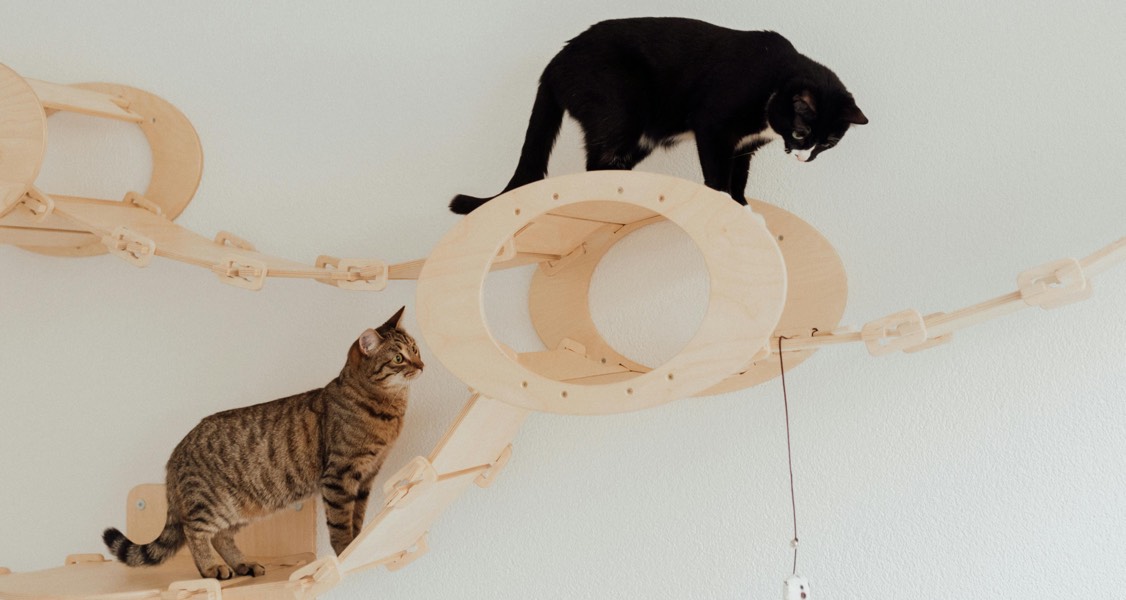Let’s face it—cats are notorious for doing what they want, when they want. They sleep like royalty, snack with precision, and occasionally sprint down the hallway at 3 a.m. like their tails are on fire. But even the most independent feline relies on their human for something critical: maintaining their health through proper diet and exercise. Just like with people, the right nutrition and enough movement can make all the difference in how cats feel, behave, and age.
In a world filled with treats, couch naps, and sneaky table scraps, it’s easy to overlook how diet and physical activity shape the well-being of our furry companions. That’s why we’re breaking it down into the top ways diet and exercise truly impact your cat’s health.
Human Foods and Cat Safety
When those big round eyes stare you down during dinner, it’s tempting to slide your cat a little taste of what’s on your plate. But before you do, it’s crucial to know what human foods are actually safe and what could cause more harm than good. Knowing this helps pet owners avoid common mistakes of feeding human food that could lead to painful digestive issues or worse.
While some foods like plain cooked chicken or small bits of salmon can offer nutritional value, others—like onions, garlic, or chocolate—are absolute no-gos. Even healthy items for humans, such as grapes or dairy products, can cause problems in cats. Knowing the difference is not just about preventing emergencies, but about building trust with your pet. When your cat knows their food source is consistent and safe, it reduces anxiety and supports overall well-being.
Raw Food for Cats and its Benefits
Should cats eat like their ancestors? That’s a big question that many pet professionals are exploring. The benefits of raw food for cats, for example, are gaining attention for good reason. This dietary shift isn’t just trendy—it may be closer to what nature originally intended for our feline friends.
Cats are obligate carnivores. This means that they thrive on meat-based diets. A raw food plan focuses on high-protein, low-carb meals that include muscle meat, organs, and sometimes even bone. Supporters of this approach argue that it better mimics what cats would eat if they were in the wild, helping to reduce processed ingredients and offer cleaner sources of nutrition. Some pet owners have reported shinier coats, improved digestion, and even increased energy levels in cats eating raw food.
But this isn’t a “set it and forget it” kind of plan. Feeding raw requires proper sourcing, handling, and portion control. Bacteria risks must be managed carefully, and meals need to be nutritionally balanced to meet feline dietary needs. When done right, raw feeding can support strong immune function, reduce inflammation, and encourage healthy weight management—all of which contribute to a longer, happier life for your cat.
Obesity in Cats can Actually Shorten Their Lifespan
Chubby cats might be cute, but when it comes to their health, excess weight is a serious issue. Obesity increases the risk of diabetes, arthritis, heart disease, and even certain types of cancer. And unlike humans, cats can’t hop on a treadmill or sign up for a fitness app. That’s why it’s on pet owners to prevent the problem before it starts—or help fix it if it’s already an issue.
Weight gain in cats often stems from free feeding, high-calorie treats, and a lack of physical activity. Indoor cats, in particular, face a unique challenge. They’re naturally less active than their outdoor counterparts and more likely to snack out of boredom than true hunger. A diet that’s too rich in carbs or overly processed doesn’t help matters either.
To manage a cat’s weight, portion control and scheduled meals go a long way. Pair that with engaging toys or puzzle feeders that get them moving and thinking at the same time, and you’re already helping them shed extra pounds in a healthy way. Regular weigh-ins and body condition checks are also smart to include in your routine, so changes are caught early.
Exercise Helps With Behavior Problems in Cats
Think your cat is knocking things off the counter just to mess with you? Maybe. But it might also be a sign that they’re not getting enough stimulation. Just like dogs, cats need both physical and mental exercise to stay balanced. Without it, their energy builds up—and usually finds a way to explode at the worst possible time.
Exercise for cats doesn’t mean putting them on a leash and heading around the block (although some cats surprisingly enjoy that). It means encouraging movement through interactive toys, climbing structures, laser pointers, and games that mimic hunting behavior. When cats get regular play, their stress levels drop, their sleep improves, and their behavior tends to stabilize.
Many so-called behavior problems in cats—scratching furniture, nighttime zoomies, aggression—are often the result of boredom or excess energy. Regular play sessions are one of the simplest and most effective ways to manage this.











